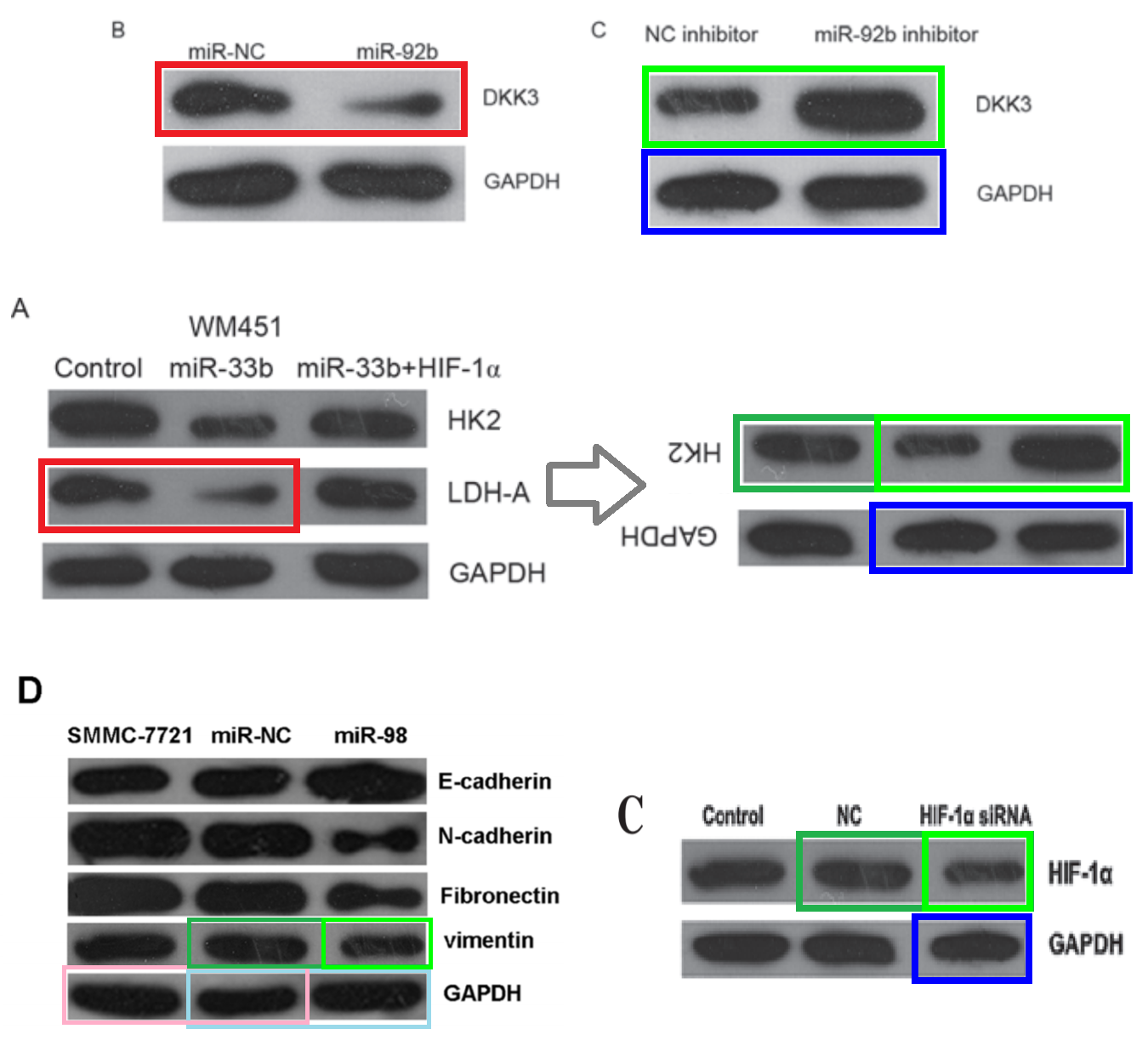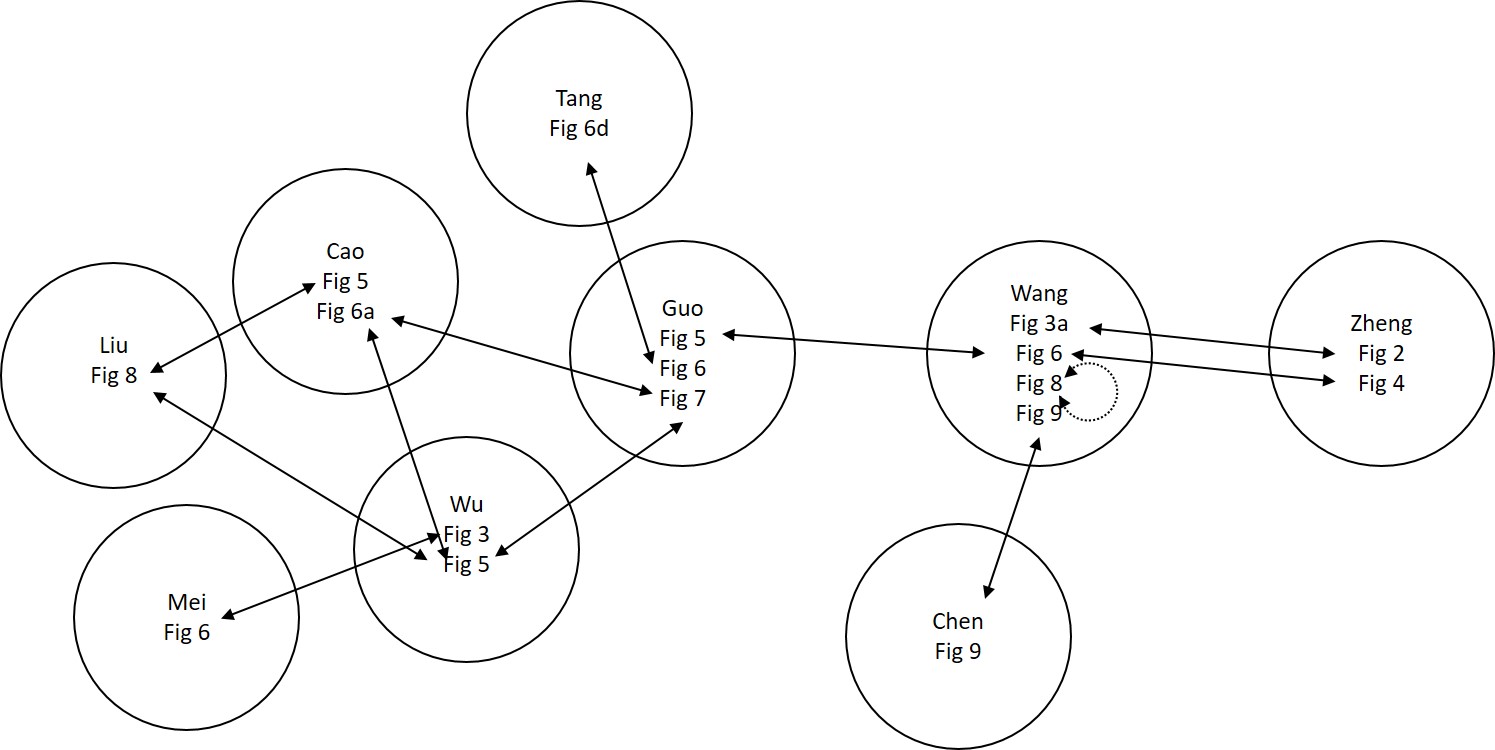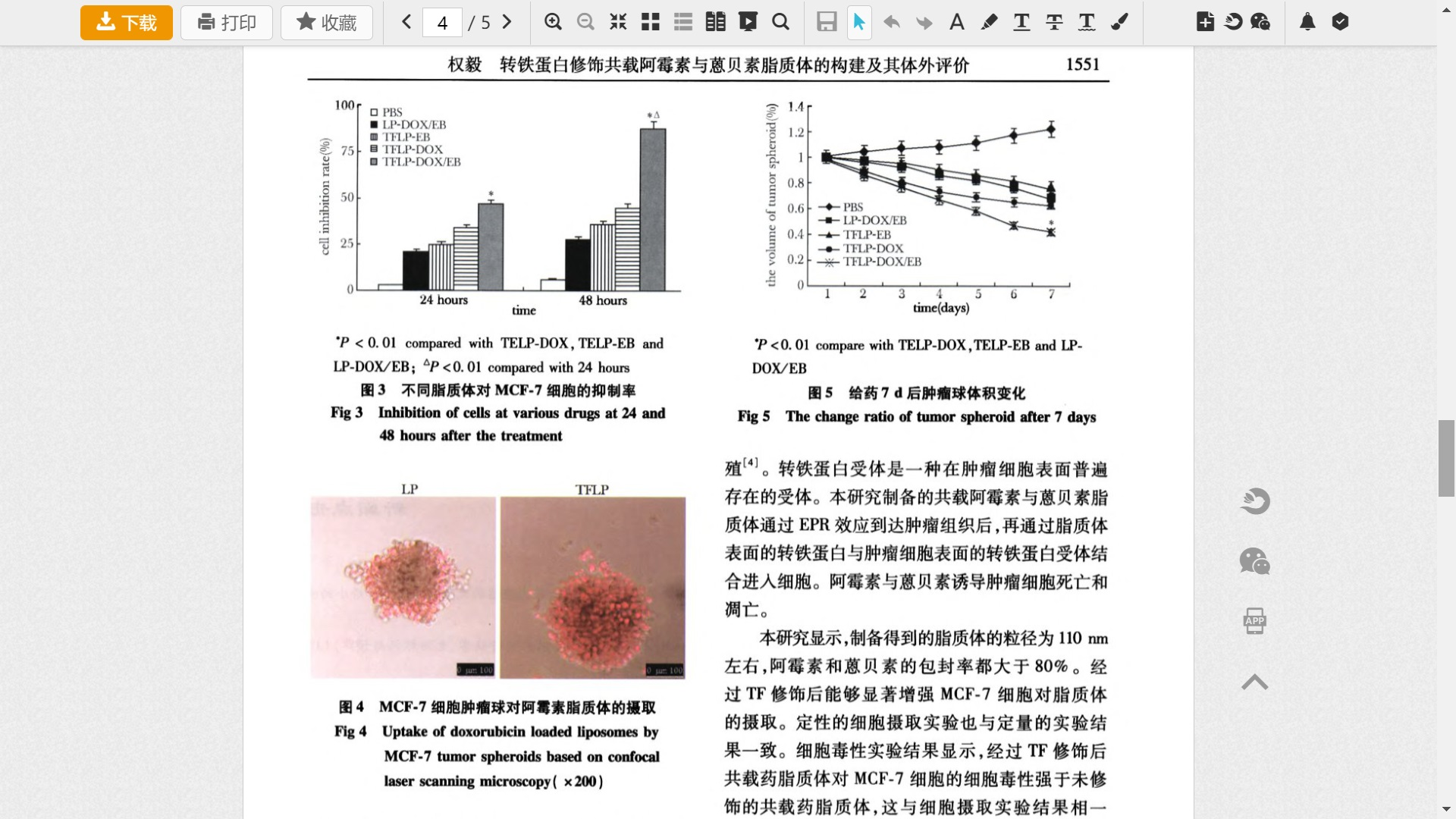So the gombeens and jamokes at the OMICS publishing-fraud scampire have stolen the identity of Genetic & Molecular Research (GMR), a Brazilian scholarly journal, in the hope that would-be authors will send their manuscripts and their money to the fake website. They have also stolen the real GMR’s archive of back-issues to give their freshly-spawned polyp a semblance of credibility. Do not bother advising the fake journal’s Editorial Board that they were duped into collaboration on an audacious con-job, for the list of purported editors is itself copy-pasted from the original. The Fundação de Pesquisas Científicas de Ribeirão Preto is not well-pleased with the situation, but Srinubabu Gedela is rich enough from large-scale frauding that he cares nothing for legal fiddle-faddle or the low opinion of the academic world.


 The crime is not the subject of this post. It makes a nice metaphor though, or an allegory as it may be, for the fact that fake science is not just a passive obstruction; it actively works to displace real science. I am sure there is some authentic cancer research going on somewhere, and real nanotech work, and non-faked drug-delivery research, but in each case the progressive accumulation of knowledge is surrounded by an imitative penumbra of bogus reports, citing one another and earning citations in literature searches. For all I know, there might even be legitimate micro-RNA studies out there, and I'm glad it's not my job to hunt through the midden for them.
The crime is not the subject of this post. It makes a nice metaphor though, or an allegory as it may be, for the fact that fake science is not just a passive obstruction; it actively works to displace real science. I am sure there is some authentic cancer research going on somewhere, and real nanotech work, and non-faked drug-delivery research, but in each case the progressive accumulation of knowledge is surrounded by an imitative penumbra of bogus reports, citing one another and earning citations in literature searches. For all I know, there might even be legitimate micro-RNA studies out there, and I'm glad it's not my job to hunt through the midden for them.Then the fakes are laundered and woven into narratives by way of synthetic reviews of the state of knowledge, and it is not easy to convince people (or their funders) that their ideas are misguided and their research program is wasted money when they can always find support from this Realm of Bogosity.
Such is my overall theme, to be illustrated here with the example of the Spandidos stable of journal. One of those journals featured in Elisabeth Bik's survey of problematic images in science publishing. I leave it to our host Leonid Schneider to provide the Demetrios Spandidos story - how he turned to predatory oncology publishing and scamferences after his career in actual oncology research went down in a smoking pile. Readers who were expecting further lurid revelations of Chinese papermills: One day you will be disappointed, but this is not that day.
Along the way we will cover the possibility that a well-regarded, prestigious medical university in China has built that reputation on a foundation of assembly-line fakery, and we will encounter the existence - previously unknown to me - of Public Laboratories, which I guess are something like Makerspaces. I for one applaud this collective-ownership approach towards experimental results. DATA TO THE PEOPLE!!
Thanks a lot for findings these errors in our paper. We finished these experiments in a public laboratory that many researchers also performed their studies there, and some images were misused because they were stored in the same public folder. We have connected the journal, and are repeating the related experiments. Once we finish the experiments, we will submit the updating data.
Dear Hoya Camphorifolia,
Thank you very much your comment. We performed these experiments in a public lab that many doctors conduct their studies there. All images were stored in the same public computer, which caused some images misuse. We will thoroughly examine the raw data and lab records of this paper, and upload correct figures to journal and pubpeer. Thank you very much again pointing out this question.
First, though, it's important to recognise the work of research-integrity advocates in China, who do not get enough credit in Western circles (in other words, I only recently heard of them myself). They were already calling attention to the existence of a papermill industry in 2016. Papermills are a hot topic of discussion now (to the point that you can probably pad out your CV by ordering and signing a paper from a papermill about the phenomenon), but five years ago, not so much.


So in 2016 the site PlagiarismWatch found and reported six papers from Chinese authors in GMR, all seemingly copied from one another. PW is now defunct and much-missed, so this is second-hand reportage through Chinese aggregator site Sohu (see also KKnews). Though 'plagiarism' has connotations of some scoundrel appropriating someone else's results or well-designed diagram or elegant phrasing. In these papers, a small gamut of images (depicting flow cytometry, Kaplan-Meier survival analysis, Transwell invasion assays and the like) was shuffled into new arrangements along with building-blocks of text and used to illustrate various tales of imaginary experiments - presumably all by the same anonymous outside author. That is, a papermill was behind the duplication. Yes, this is the same GMR we encountered above as the victim.
GMR is not alone in having papermills recommend it to one another as a
Investigations are easier with the benefit of hindsight, and the tally of the papermill's output now stands at 33 (the obligatory spreadsheet is here).
A common feature of papermillers, when they relieve the putative authors of the role of submitting manuscripts and negotiating with a journal, is to use a structured format for assigning names to the single-use, throwaway "corresponding author" email accounts (perhaps to avoid mixing their clients' commissions). That was the case here:
All emails are 163 mailboxes, and the first three to four letters of the mailbox are the abbreviations of "doctor" and "manu"Summarising those 33 papers by journal (bolded titles are Spandidos):
- Asian Pacific Journal of Cancer Prevention
- 3 x Biomedicine & pharmacotherapy
- Diagnostic Pathology
- Experimental and Therapeutic Medicine
- 13 x Genetics and molecular research
- Medical oncology
- Medical Science Monitor
- 2 x Molecular Medicine Reports
- Oncology Letters
- 2 x Oncology Research
- 2 x OncoTargets and Therapy
- World Journal of Gastroenterology
- 4 x World Journal of Surgical Oncology
"Apule" writes:
1. The top 10 favorite magazines of Chinese scholars are almost all foreign SCI magazines. In other words, China almost supports these foreign magazines or their publishers on its own.
Of course the author is fully aware that these scholarly exports are fabrications, published to fulfil a career-path criterion rather than to share a discovery; and that research funds are divvied up between parasitical publishers and papermills. But it would be impolitic to say that part out loud, so the focus shifts to the injustice of diverting funds off-shore, which could be building a Chinese science-publishing industry.
From September to November 2018 (only three months), the top 39 journals published by Chinese scholars published a total of about 62,508 papers by Chinese scholars in three months, which is a staggering volume. ... If 100% choose to pay page fees, it is estimated that Chinese scholars will have to pay about 1 billion yuan in page fees to the 39 magazines in the table in 2019.Apule notes, in particular, that the Spandidos publishing empire would not be sustainable without China as a supplier of money and material to fill the pages: **
2. The two magazines published by the Greek publisher Spandidos won the top three places and directly won the first and second places, becoming the most popular magazines by Chinese scholars.Readers of Dr Bik's Science Integrity Digest are already familiar with Spandidos organs, by way of the oeuvre of Zhang & Zhang. Here Zhang père is (or was) President of Xuzhou Central Hospital, while Zhang fille had a career in need of embellishment. Together they displayed a polymathic breadth of knowledge seldom seen since Athanasius Kircher and other Renaissance encyclopedists... publishing Review papers on topics ranging from "Stem cell transplantation during cancer" through nanotechnology and scorpion venom and telemedicine to "Hospital information technology in home care". Mostly in Oncology Letters (with three excursions to Experimental and Therapeutic Medicine and another to a Bentham journal, Current Nanoscience).
3. The first Greek magazine Experimental and therapeutic medicine continued to climb from 89.05% of Chinese scholars in 2017 to 89.40% . It is so friendly to Chinese scholars that we are embarrassed not to top it to 100%. As the saying goes, "flies don't bite seamless eggs", you know.
The source of a 14th Review remains untraced. A dissertation that's still quarantined? A paper behind a paywall, or a book, not Google-indexed? A co-author with actual expertise?
Similar possibilities apply to a 15th review paper in a BMJ journal. Three other reviews remain unexamined because they were
At the risk of wandering away from the topic, what in the name of Baphomet is going on at Xuzhou University? Please compare "Reform of public hospitals and the main role of medical staffs" (Zhang, 2014) and "Public Hospital Reform and the Principal Roles of Medical Staff" (Zhang, 2015). Both published in Cell Biochemistry and Biophysics, they overlap considerably, for there is only so much that one can say about the restructuring of Xuzhou Central Hospital under the leadership of Peiying Zhang in accordance with policy directions from the Party. They call out to be illustrated with paintings from the Soviet Realism genre, in which the Five-Year Plan inspires the Irkutsk Tractor-Driver Collective to pledge even greater productivity.
The choice of Cell Biochemistry and Biophysics as the home for this self-congratulatory hospital-culture fiddle-faddle is not an obvious one. CBB is a Springer journal (not to be confused with Cellular Physiology and Biochemistry, previously from Karger). The publisher adopted the open-access model, with a system of author-nominated peer-reviewers which worked precisely as well as one might imagine: a cabal of sockpuppets and rubber-stamps took over, the remit loosened to abandon criteria like "cell biology", and the journal became yet another stovepipe for Odes to Small Lumps of Green Putty. Peiying Zhang and Ziqi Tao took full advantage of this opening of opportunity. In the years 2014-2015, CBB functioned as the Xuzhou Hospital press office: a pukefunnel for Shareholder Reports in which the CEO extolled the high morale of the medical staff and took credit for their expressions of gratitude for the reforms of the Zhang Administration and consequent improvements.
Perhaps the journal subsequently reformed as well. Perhaps I have strayed from the topic.
One much larger tranche of Spandidos papers remains. The oeuvre is united in many ways, drawing on a common pool of illustrations, but I am still in two minds whether 'papermill' is the best label for it. There is a suite of scratch-healing migration-assay images...


A repertory of Transwell invasion-assay images, notable for their versatility, shuffled like so many Tarot-Deck cards into different configurations to illustrate (at most recent count) 45 combinations of cell-lines and treatments. In the inevitable Google Spreadsheet these sightings are marked by "Group 1" in the Transwell column. Other Transwell repertoires lurk on the fringes of this corpus, used less frequently, up to a dozen times each.
I should not forget the flow-cytometry histograms for cell-cycle counting, nor the hockey-stick flow-cytometry scatterplots.


Dear Hoya:
Thanks for your comments. I will investigate this and discuss with my team.


The most important unifying element, though, is a small, blobby gamut of Western Blot bands.
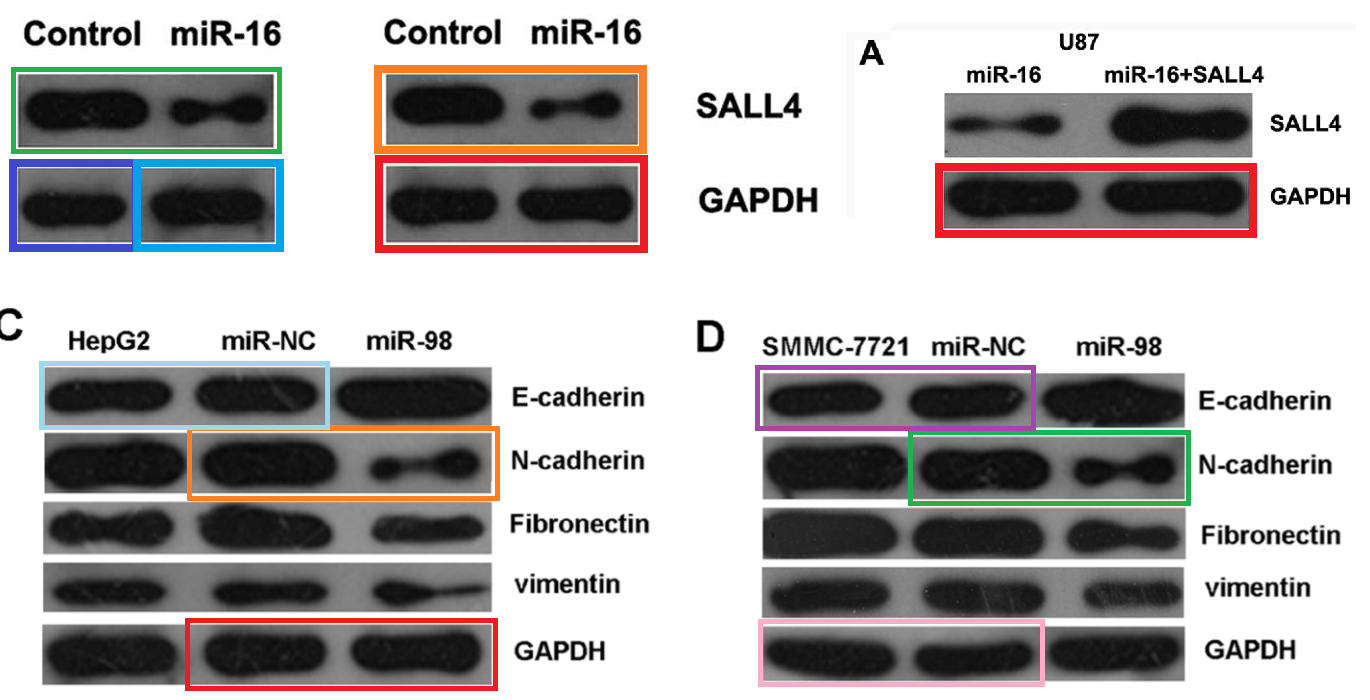
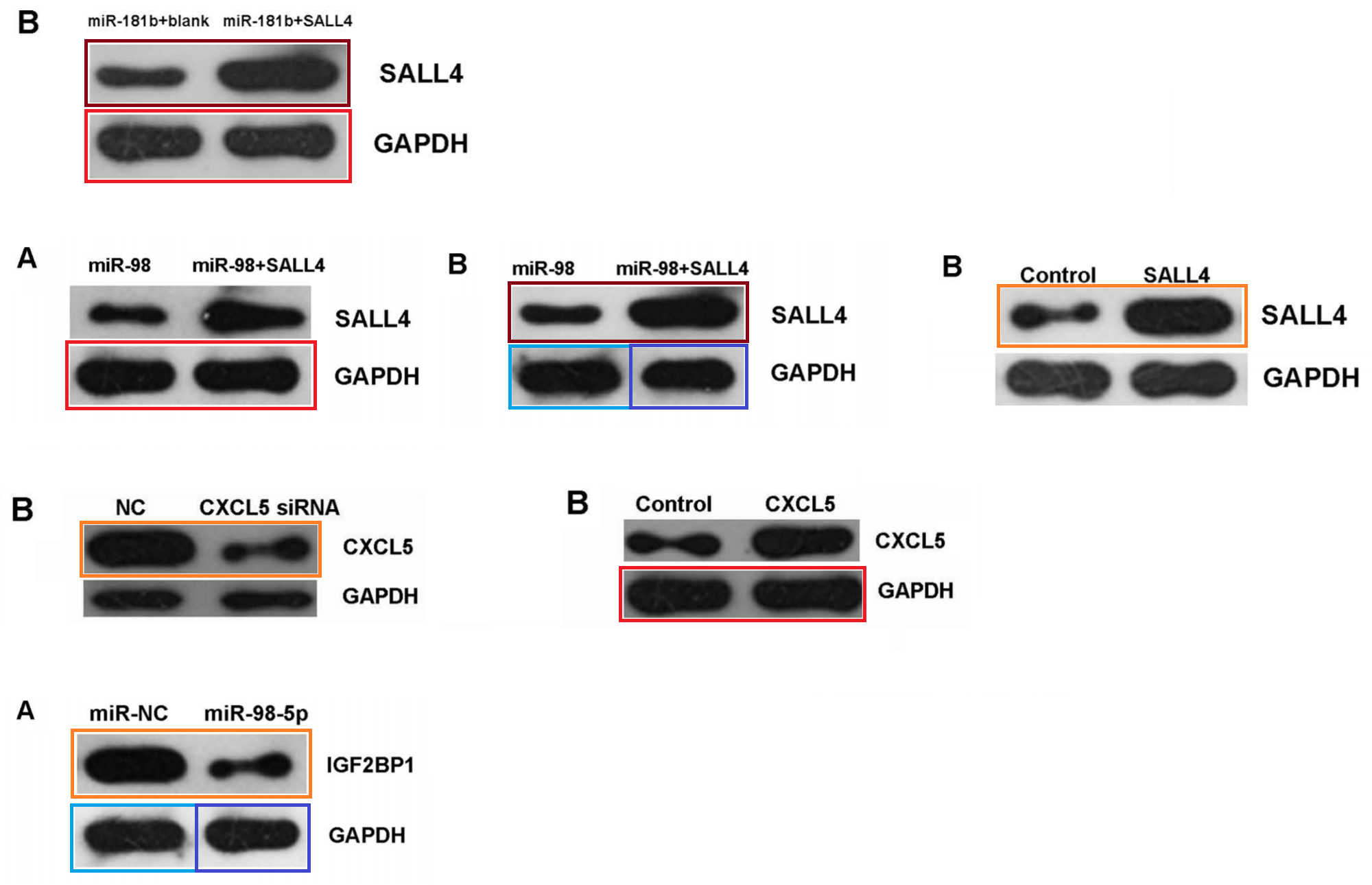
At the time of writing, 120 entries in this corpus have come to light. We can be confident that at least another 80 are waiting to be found by a systematic, comprehensive search (though perhaps many times that), meaning a total output of at least 200 papers. They were channeled through Spandidos by preference: 96 papers treated Experimental and Therapeutic Medicine, International Journal of Oncology, Molecular Medicine Reports, Oncology Letters and Oncology Reports as fungible. Minorities were bound for the ever-welcoming pages of Oncology Research (13 papers), with smaller metastases in Oncotarget, OncoTargets & Therapy, and e-Century's International Journal of Clinical and Experimental Pathology (4, 3 and 2 entries respectively).
The spreadsheet includes "Low p21 level is necessary for the suppressive effects of micoRNA-31 on glioma cell migration and invasion" (Pan et al 2016), which was retracted from Tumor Biology in 2017 as part of a mass purge of 107 fabrications, when the publisher determined that "the peer review process was compromised". To put it another way, Springer noticed that money was passing hands for entry to the pages of Tumor Biology in addition to what they were receiving. Otherwise the paper cannot be distinguished from the rest of this genre.
Various authors' responses to PubPeer commentary on this tightly-interconnected group of papers is how we learned of Community Laboratories.
Dear Hoya: Thanks for your comments. We will investigate this and I discussed with my team members about repeating these years-ago experiments because these experiments in a public laboratory that shared with many other researchers.
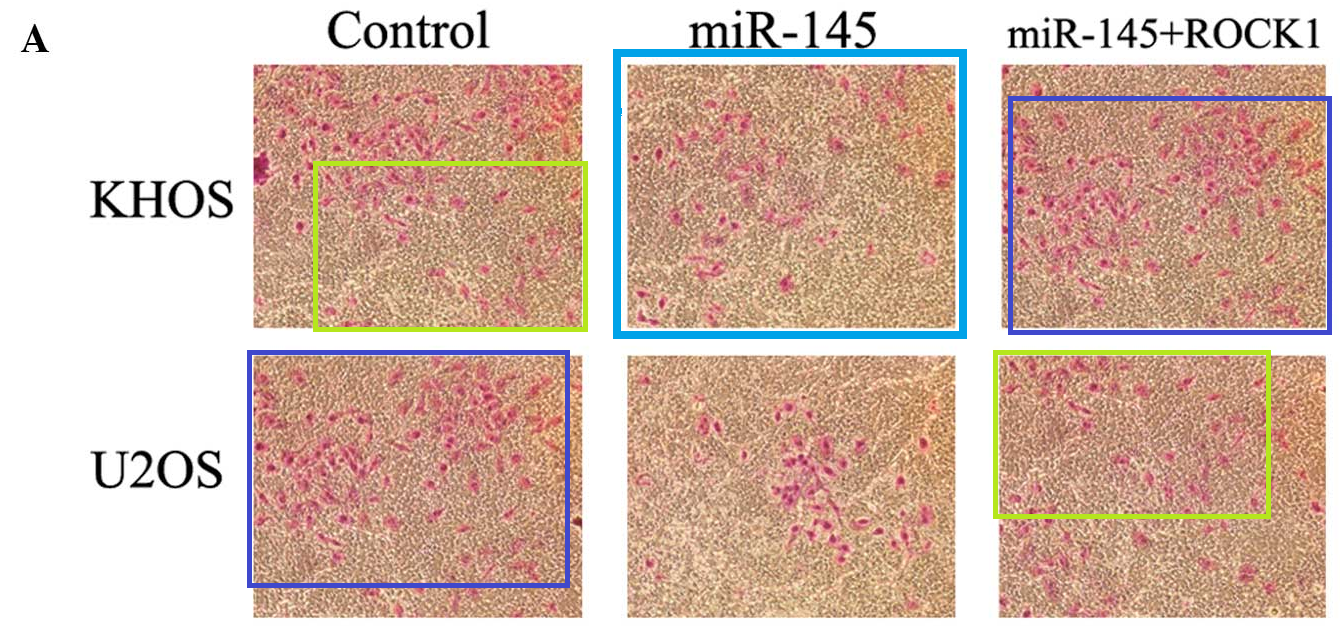
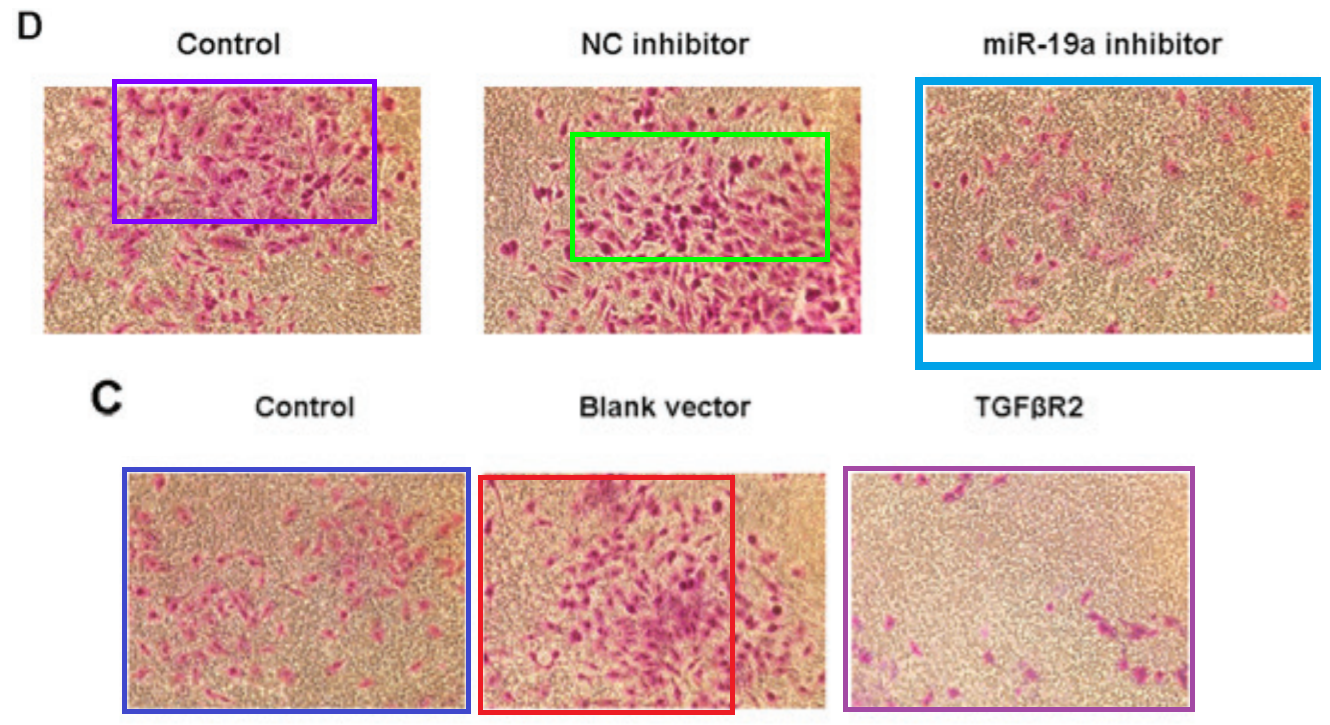

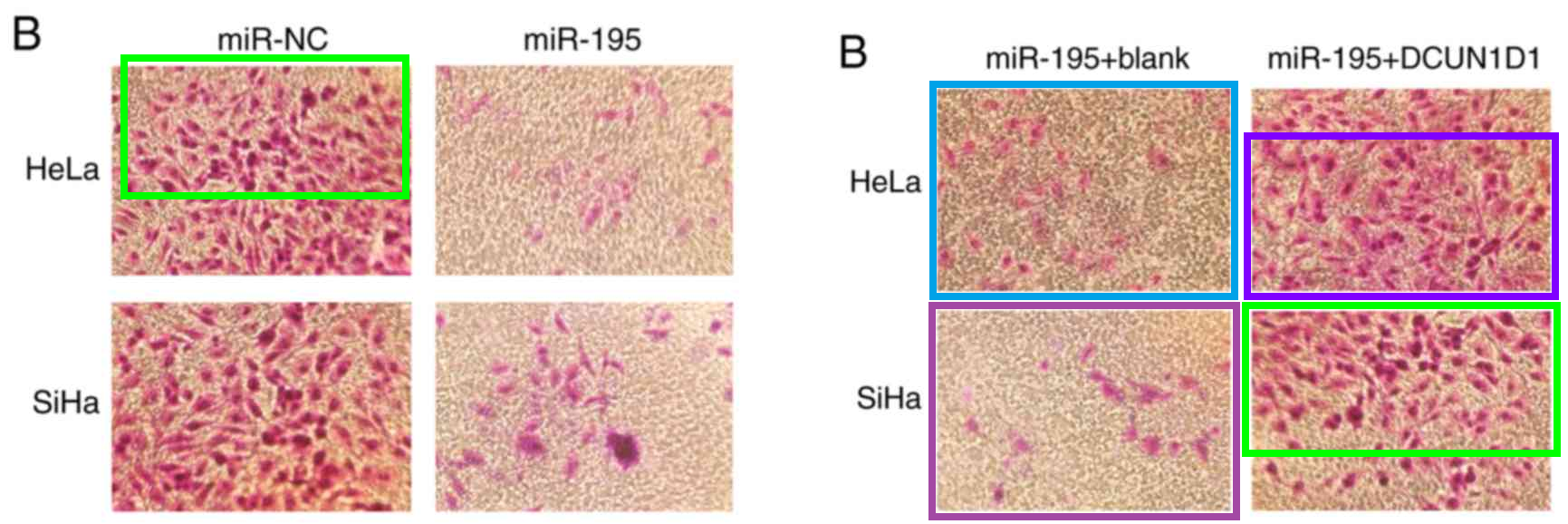
Communal laboratories did not come into the picture when Professor Li apologised for the duplication of scratch-healing migration-assay images, and for the overlapping corners of two Transwell invasion-assay images, promising to supply the journal editors with amendments. Rest assured that the errors do not affect the validity of the conclusions.
#2 Dear Madam
I'm the first author, named Qizhuang Li. Thank you for your reminder and kindly comments. As we got the message from the email, we immediately checked the original data of the experiment. It's our mistakes for inappropriate images. And soon we will contact the editorial office of the Journal, Oncology Reports, for this mistake and make the necessary corrections as soon as possible. The misuse of the picture will not directly affect our hypothesis and results. We apologize again and thanks for your constructive comment. We will try our best, with a more rigorous attitude, to review manuscript to prevent it.
Sincerely yours, Qizhuang Li, M.D.
E-mail: zhuangzly@163.com
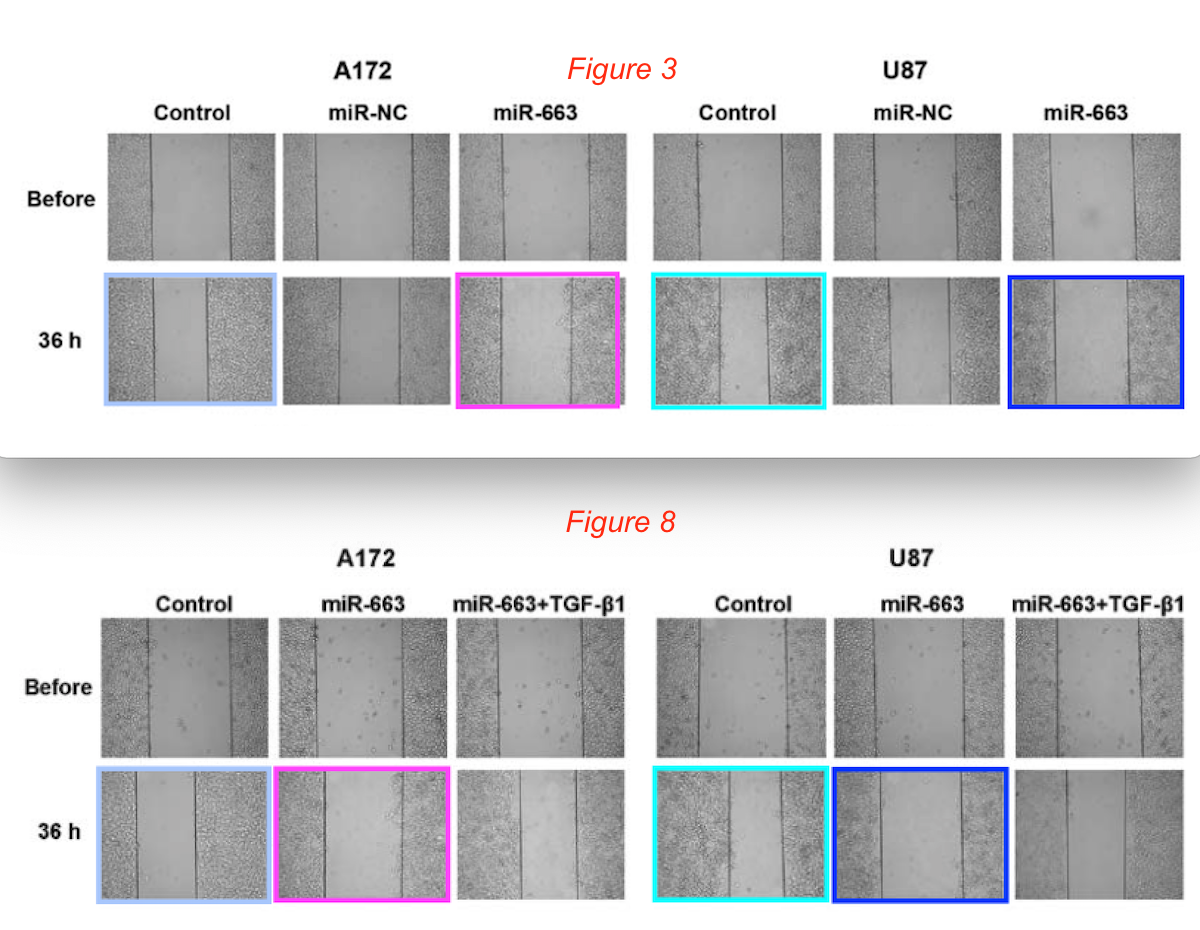
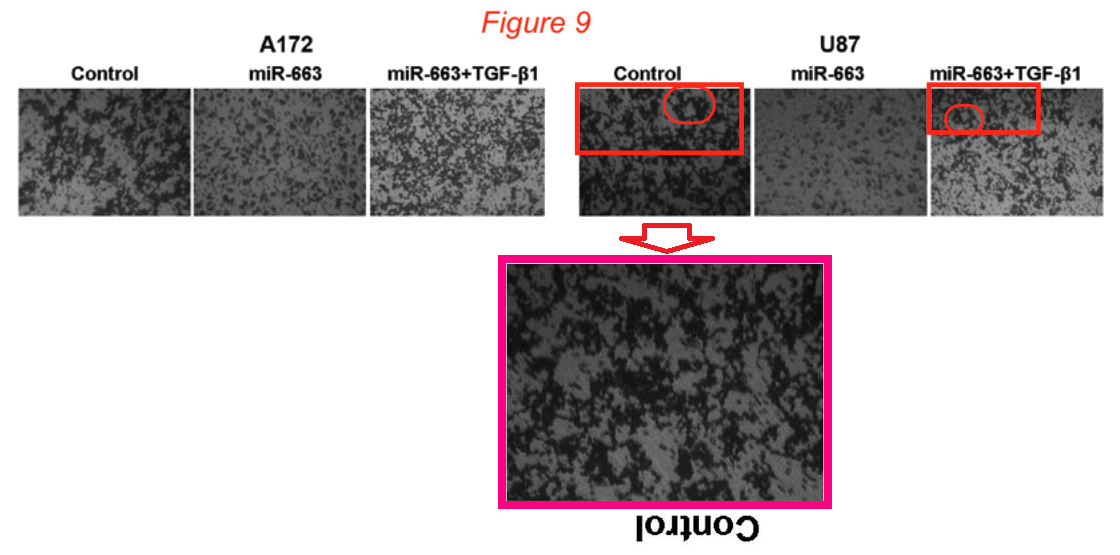
Nor were they part of Prof Cheng's assurances when two images were not unique.
Thanks for pointing out the error. These two panels were mistakenly duplicated. We will contact the editors for corrections.
We may hear more, but the authors stopped delivering assurances after the revelations that these unduplicated panels feature in at least 11 and nine other papers respectively, while the Western blots are impressively Protean in their versatility.
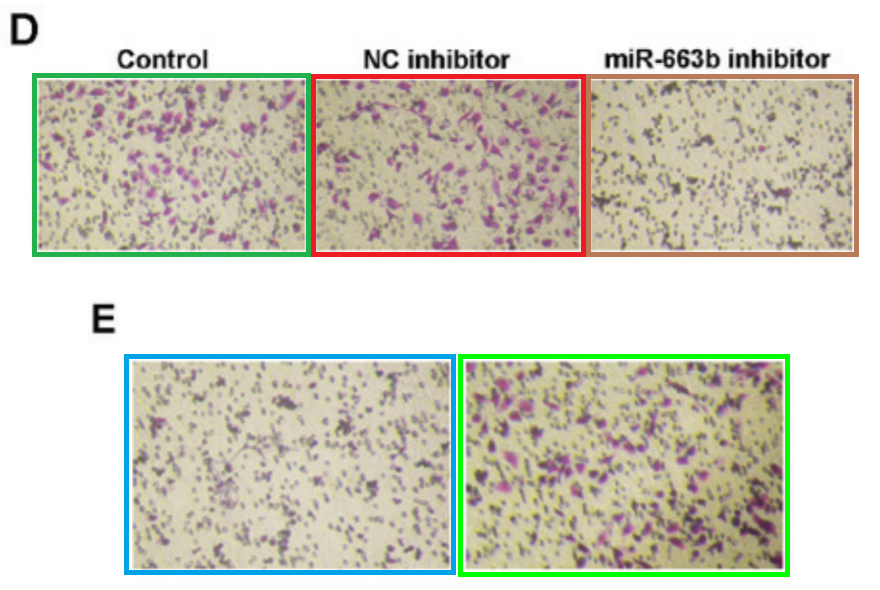
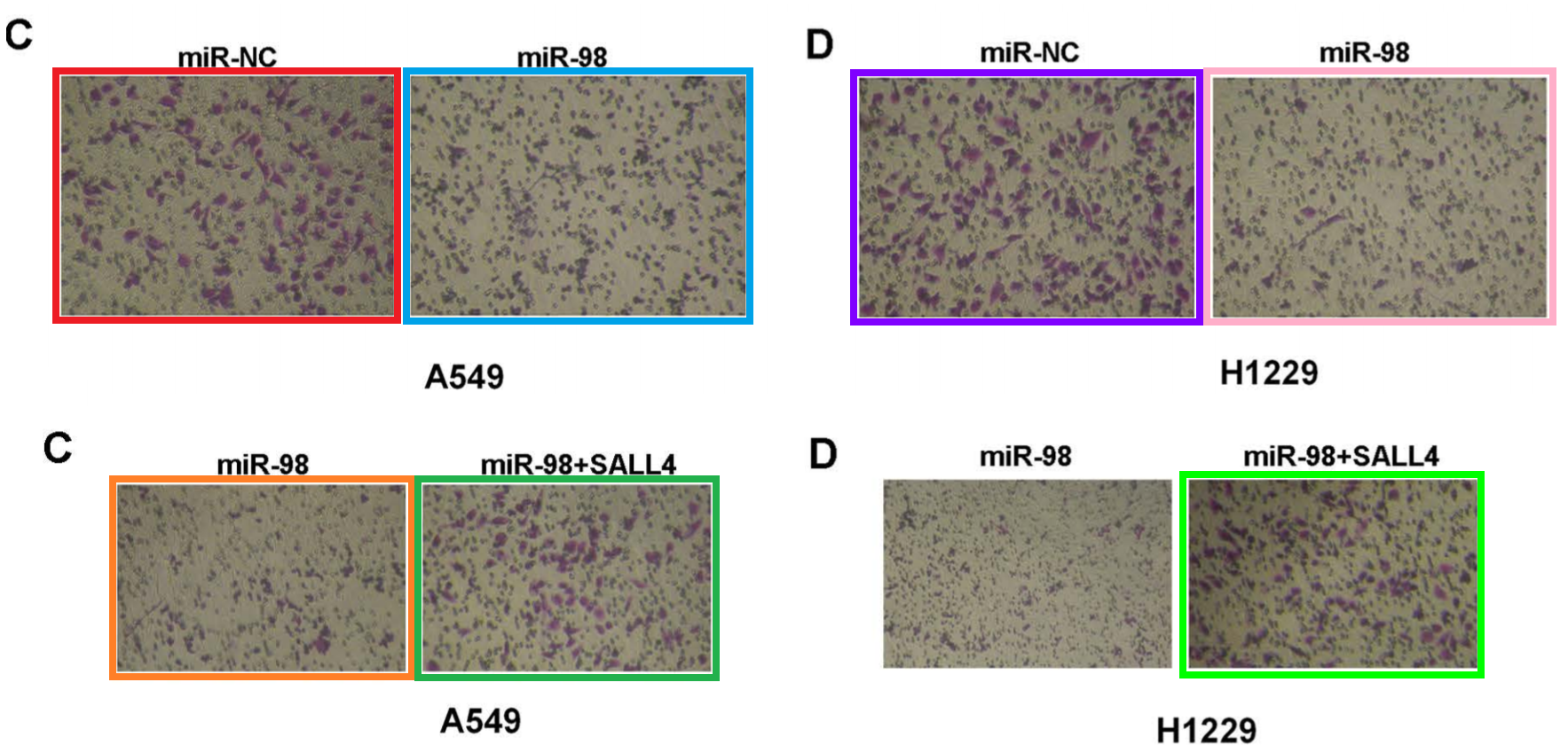
All these manifestations were confined to a half-decade with none showing up earlier than 2013 or later than 2018, so this is a historical phenomenon. Even so, it is of more than antiquarian interest: it's unlikely that the perps walked away from a lucrative activity in 2018, and I assume that they simply acquired new material. In the years since their publication, the fictitious nature of these papers has not reduced their usefulness to other authors as building material for the foundations or buttresses of later papers, and they've been cited on average 21 times each.
These generalisations come with the caveat that false positives are possible, and some papers swept into the spreadsheet might be misattributed. For not everyone in the papermill industry is a paragon of scrupulosity, and images from one studio's stock are sometimes plagiarised by a second.
Here again, corresponding-author e-addresses hew to a default structure, initially at least. Priority was given to the supposed author's institution, and there is a plurality of "csu$AUTHOR_ID@163.com" or "xiangya$AUTHOR_ID@163.com". Here CSU is the large, well-regarded Central South University in Changsha, with affiliated Xiangya Hospitals. My working hypothesis is that the bogus papers come from an in-house unity within CSU, perhaps founded to assist the students of one or two research 'empires' with their dissertations, later opening the doors to a wider customer base. Hence my uncertainty about the title "papermill". When clients came from outside CSU, the studio kept the pattern to generate burner email accounts for steering their papers through publication, so we find "qdu$AUTHOR_ID@163.com" (Qingdao University) and "jishou$AUTHOR_ID@163.com" and "xiamen$AUTHOR_ID@163.com".
Searching the spreadsheet reveals clusters of repeat customers. Normally a papermill does not expect return custom, for each client only calls upon its services once or twice (when they need a paper to pass a career hurdle) so this is a departure from that generalisation. Entire research programs have been spun out of straw. The usual 'career-hurdle pressure plus research incapacity' excuses do not really apply in these cases of high-ranking researchers.
A group at Xiangya Hospital of CSU is headed by Hongbo He (chair of the Orthopedics department). We find them signing a stream of papers, focusing on osteosarcoma but not exclusively so:
"microRNA-145 inhibits osteosarcoma cell proliferation and invasion by targeting ROCK1" (2014). Molecular Medicine Reports doi: 10.3892/mmr.2014.2195.These assembly-line productions were preceded and followed by publications in non-miR research, and for all I know, the team's results on hip arthroplasty and improved biocompatible nanotech coatings for surgical implants are totally legitimate.
"Antitumor effect of resveratrol on chondrosarcoma cells via phosphoinositide 3-kinase/AKT and p38 mitogen-activated protein kinase pathways" (2015). Molecular Medicine Reports doi: 10.3892/mmr.2015.3683.
"Small interfering RNA-induced inhibition of epithelial cell transforming sequence 2 suppresses the proliferation, migration and invasion of osteosarcoma cells" (2015). Experimental and therapeutic medicine doi: 10.3892/etm.2015.2306.
"Small interfering RNA-induced silencing of galectin-3 inhibits the malignant phenotypes of osteosarcoma in vitro" (2015). Molecular Medicine Reports doi: 10.3892/mmr.2015.4165.
"MicroRNA-124 suppresses the migration and invasion of osteosarcoma cells via targeting ROR2-mediated non-canonical Wnt signaling" (2015). Oncology Reports doi: 10.3892/or.2015.4186.
"Knockdown of PREX2a inhibits the malignant phenotype of osteosarcoma cells" (2016). Molecular Medicine Reports doi: 10.3892/mmr.2015.4728.
"MicroRNA-205 acts as a tumor suppressor in osteosarcoma via targeting RUNX2" (2016). Oncology Reportsdoi: 10.3892/or.2016.4700
"MicroRNA-133b inhibits the migration and invasion of non small cell lung cancer cells via targeting FSCN1" (2016). Oncology letters. doi: 10.3892/ol.2016.5044.
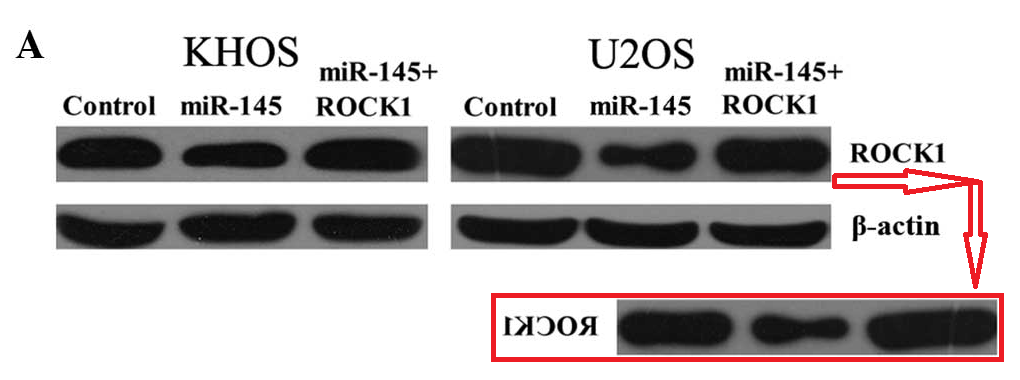

A lung-cancer-oriented cluster centres on Peng Xiao, Wenliang Liu and Hui Zhou. Liu is a full professor of CSU and Chief Surgeon of the Department of Thoracic Surgery, Zhou is at the CSU Laboratory of Medical Genetics (which held the title of State Key Laboratory until delisted in 2017).
"MicroRNA-138 acts as a tumor suppressor in non small cell lung cancer via targeting YAP1" (2016). Oncotarget doi: 10.18632/oncotarget.9480.Gliomas are the theme for a cluster at the Department of Neurosurgery of Xiangya Hospital, headed by Chief Surgeon, Professor Bing Jiang. Zhiming Ma and Xin Wan are associate professors and associate chief surgeons in the same department.
"miR-200b inhibits migration and invasion in non-small cell lung cancer cells via targeting FSCN1" (2016). Molecular Medicine Reports doi: 10.3892/mmr.2016.5421.
"miR-429 promotes the proliferation of non-small cell lung cancer cells via targeting DLC-1" (2016). Oncology letters doi: 10.3892/ol.2016.4904.
"MicroRNA-138 inhibits migration and invasion of non-small cell lung cancer cells by targeting LIMK1" (2016). Molecular Medicine Reports doi: 10.3892/mmr.2016.5769.
"MicroRNA-98 Plays a Suppressive Role in Non-Small Cell Lung Cancer Through Inhibition of SALL4 Protein Expression" (2017). Oncology Research doi: 10.3727/096504016x14791726591124.
"Overexpression of MicroRNA-27b Inhibits Proliferation, Migration, and Invasion via Suppression of MET Expression" (2017). Oncology Research doi: 10.3727/096504016x14732772150505.
"Forced downregulation of RACK1 inhibits glioma development by suppressing Src/Akt signaling activity" (2013). Oncology Reports doi: 10.3892/or.2013.2723The next cluster is a collaborative effort, combining the Department of Oncology, Third Xiangya Hospital (where Peiguo Cao is full professor and chief oncologist) with Jianda Zhou from the Department of Plastic Surgery. The outcome is more diverse productivity.
"MicroRNA-203 inhibits the proliferation and invasion of U251 glioblastoma cells by directly targeting PLD2" (2014). Molecular Medicine Reportsdoi: 10.3892/mmr.2013.1814
"ROCK1, a novel target of miR-145, promotes glioma cell invasion" (2014). Molecular Medicine Reports doi: 10.3892/mmr.2014.
"PAX6, a novel target of miR-335, inhibits cell proliferation and invasion in glioma cells" (2014). Molecular Medicine Reports doi: 10.3892/mmr.2014.2150.
"MicroRNA-663 inhibits the proliferation, migration and invasion of glioblastoma cells via targeting TGF-β1" (2016). Oncology Reports doi: 10.3892/or.2015.4432.
"CXCL5 promotes the proliferation and migration of glioma cells in autocrine- and paracrine-dependent manners" (2016). Oncology Reports doi: 10.3892/or.2016.5155.
"Methylation-induced downregulation and tumor-suppressive role of microRNA-98 in glioma through targeting Sal-like protein 4" (2018). International Journal of Molecular Medicine doi: 10.3892/ijmm.2018.3464.
"MicroRNA‑423‑3p promotes glioma growth by targeting PANX2" (2018). Oncology letters doi: 10.3892/ol.2018.8636.
"Talen-mediated girdin knockout downregulates cell proliferation, migration and invasion in human esophageal carcinoma ECA109 cells" (2014). Molecular Medicine Reports doi: 10.3892/mmr.2014.2268.These all follow the same pattern as the first cluster: a phase of fabrication, preceding or adorning a broader output of more plausible papers. "Silencing of CerS6 increases the invasion and glycolysis of melanoma WM35, WM451 and SK28 cell lines via increased GLUT1-induced downregulation of WNT5A" (Tang et al 2016) lacks the hallmarks of the studio described here, but its Figure 2E does not inspire a great deal of confidence.
"MicroRNA-195 functions as a tumor suppressor by inhibiting CBX4 in hepatocellular carcinoma" (2015). Oncology Reports doi: 10.3892/or.2015.3734.
"Expression of Girdin in primary hepatocellular carcinoma and its effect on cell proliferation and invasion" (2015). International journal of clinical and experimental pathology pubmed: 25755745.
"miR-101 Inhibiting Cell Proliferation, Migration and Invasion in Hepatocellular Carcinoma through Downregulating Girdin" (2016). Molecules and Cells doi: 10.14348/molcells.2016.2161.
"Downregulation of let-7b promotes COL1A1 and COL1A2 expression in dermis and skin fibroblasts during heat wound repair" (2016). Molecular Medicine Reports doi: 10.3892/mmr.2016.4877.
"MicroRNA-18b inhibits the growth of malignant melanoma via inhibition of HIF-1α-mediated glycolysis" (2016). Oncology Reports doi: 10.3892/or.2016.4824.
"MicroRNA-138 suppresses proliferation, invasion and glycolysis in malignant melanoma cells by targeting HIF-1α" (2016). Experimental and therapeutic medicine doi: 10.3892/etm.2016.3220
It does seem, anyway, that more than one research group at Central South University accept that the responsibilities of academia include forging results and drowning out the weak signal of "Stuff we know" in a deafening noise-storm of falsehoods and nescience. Inquiring minds are wondering how far this acceptance extends.
A final cluster of repeat custom comes from a group at the Departments of Gynecology and Obstetrics, at First Affiliated Hospital of Xinxiang Medical University, where Shaoru Li is full Professor. There is no obvious link to CSU.
"The mTOR inhibitor AZD8055 inhibits proliferation and glycolysis in cervical cancer cells" (2013). Oncology letters doi: 10.3892/ol.2012.1058.This is not the only instance of an institutional junkpaper studio. If I were in charge of a university department in China, regularly signing requisitions from professors needing to buy papermill products for their students, I would think hard about all the money to be saved by setting up an in-house falsification factory (though there is no escaping the expense of paying Spandidos to host the results).
"microRNA-206 overexpression inhibits cellular proliferation and invasion of estrogen receptor α-positive ovarian cancer cells" (2014). Molecular Medicine Reports doi: 10.3892/mmr.2014.2021,
"miR-22 inhibits proliferation and invasion in estrogen receptor α-positive endometrial endometrioid carcinomas cells" (2014). Molecular Medicine Reports doi: 10.3892/mmr.2014.2123.
"MicroRNA-148a inhibits the proliferation and promotes the paclitaxel-induced apoptosis of ovarian cancer cells by targeting PDIA3" (2015). Molecular Medicine Reports doi: 10.3892/mmr.2015.3826.
"MicroRNA-148a inhibits migration and invasion of ovarian cancer cells via targeting sphingosine-1-phosphate receptor 1" (2015). Molecular Medicine Reports doi: 10.3892/mmr.2015.3827.
"MicroRNA‑302 inhibits cell migration and invasion in cervical cancer by targeting DCUN1D1" (2018). Experimental and Therapeutic Medicine doi: 10.3892/etm.2018.6223.
"MicroRNA‑130a regulated by HPV18 E6 promotes proliferation and invasion of cervical cancer cells by targeting TIMP2" (2019). Experimental and Therapeutic Medicine doi: 10.3892/etm.2019.7226.
There seems to be one at Jilin University, where ostensibly-unrelated groups from various departments are passing around Western Blot bands like lollipops at an antivax Measles Party. By sheer strength of will I have avoided travelling down that side-alley. I also fended off the temptations of a third Spandidos-centric papermill (with a few dozen products so far on PubPeer, and no especial concentration at one institution). You can thank me in the comments.
If I may indulge in nostalgia for a moment: My own fascination with papermill studies began with this embryonic network, helpfully constructed by PubPeer contributor 'Macrophthalmus Grandidieri' to summarise the contents of multiple PP threads.
Space does not permit a full exegesis. Suffice to say that despite the scarcity of authors in common, papers shared blocks of text in common, and iridescent mice, and spheroids of vat-cultured cancer cells: the carcinomic equivalents of 'organoids'. Three of the papers were from the laboratory of one Qin He, so shared elements of appearance can be predicted. But that laboratory seems to be the source of graphic material for the rest of the network, and simple copy-pasted plagiarism is not explanation enough, as the copycats had access to more complete versions than those that appeared in print.
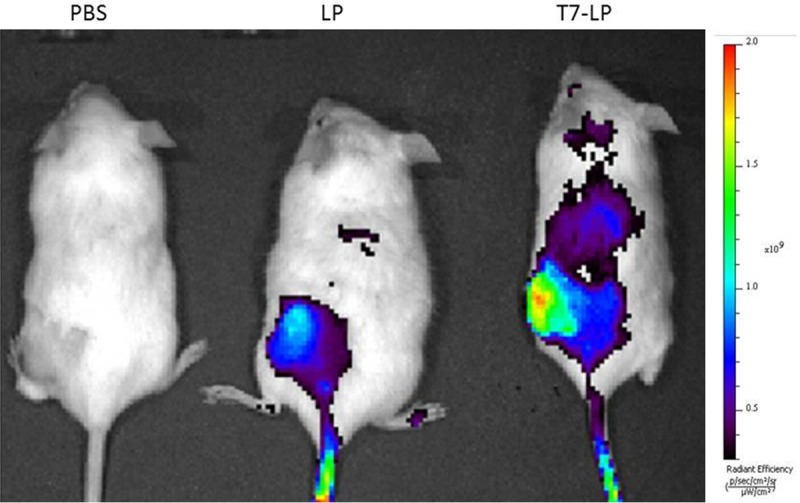
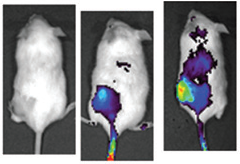
So despite the protection of an ablative heatshield of copy-pasted clones, the editors of Oncology Reports recently bowed to the inevitable and retracted Chen et al (2015) - the editors of Oncology Letters having accepted the retraction on Wang et al (2015) in 2017. The International Journal of Clinical & Experimental Medicine had already contributed its own retractions to the network. Oncology Letters and Oncology Reports are Spandidos outlets, thereby keeping us on-topic, in addition to the papers' special elements of interest.
But then the retraction of "Efficacy of dual-functional liposomes containing paclitaxel for treatment of lung cancer" (Wang et al 2015) went viral in Chinese research-integrity circles, or prionic at the very least. Alas, not everyone in social media is scrupulous about crediting sources so I am not sure whom to credit for the crucial observation, so here I'll stick to Apule at KKnews.
The "crucial observation" being the discovery that the e-address provided for correspondence with Rong-Hua Wang (of People’s Hospital of Zhangqiu) serves the same purpose for perhaps five other authorial teams, who had commissioned and signed maybe 10 other papers in Chinese-language science journals. That is, papermilling is not just an international problem, but has an intra-China aspect.
The bloggers independently noticed the trails of plagiarism linking Wang et al (2015) to Guo et al (2015) (Oncology Letters again, and conspicuously unretracted); and to Zheng et al (2015) (IJCEP again, no dedicated PubPeer thread). They haven't encountered the PubPeer coverage, and if they're aware of the involvement of Qin He's laboratory, they were too circumspect to mention it.
Those Chinese-language papers feature the material that became the now-retracted 2015 Oncology Reports paper. They are illustrated with cancer-cell spheroids closely paralleling Qin He's publications, though I have not worked through her prolific output to check whther they're published images or ones purloined somehow from the laboratory's archives. Someone in the research group is supplementing their income by selling the lab's material to a papermill (if not moonlighting as a papermiller directly). Someone should probably let Qin He know.
** There is also a dedicated Spandidos post.
[Spandidos] is a foreign SCI magazine that almost depends on China to support itself
"Many foreign magazines are indeed supported by Chinese scholars, and most scholars know it well. However, there are not many publishers or magazines that almost rely on China to support themselves. The Greek Spandidos magazine is one of them. In fact, this magazine has appeared in our reports for many years. The following is a further analysis of the publishing behavior of this magazine based on the latest data in 2018.""The magazine is far away from China, but among the 6 SCI magazines with impact factors , Chinese scholars accounted for more than 60% of the articles published in 2018, of which 5 magazines were almost all above 80%, with the highest two. Almost over 90% , approaching 100%. Is the magazine too friendly to Chinese scholars, or is it that Chinese scholars love this Greek magazine thousands of miles away?"
















